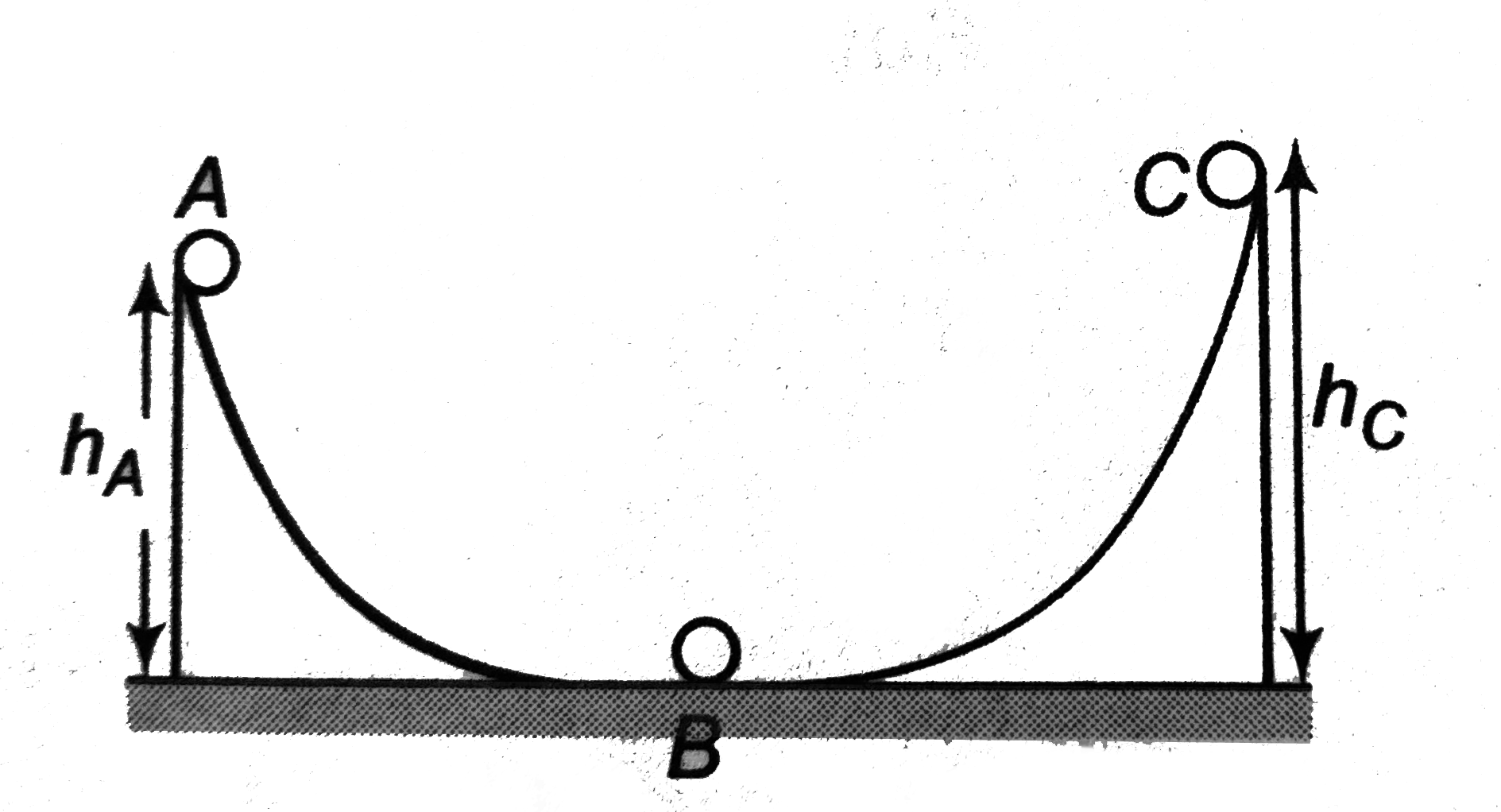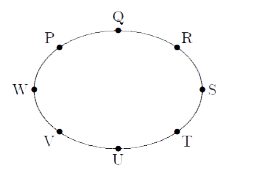
A ball moves over a fixed track as shown in the figure. From A to B the ball rolls without slipping. If surface BC is frictionless and and are kinetic energies of the ball at A, B and C respectively then
(a).
(b).
(c).
(d).
On smooth part BC, due to zero torque, angular velocity and hence the rotational kinetic energy remains constant. While moving from B to C translational kinetic energy the correct option is (a).
Topper's Solved these Questions
- ROTATIONAL MECHANICSBook:DC PANDEY ENGLISHChapter:ROTATIONAL MECHANICSExercise:Miscellaneous Examples
Explore 2 Videos
- ROTATIONAL MECHANICSBook:DC PANDEY ENGLISHChapter:ROTATIONAL MECHANICSExercise:Solved Example
Explore 1 Video
- ROTATIONAL MECHANICSBook:DC PANDEY ENGLISHChapter:ROTATIONAL MECHANICSExercise:Subjective Questions
Explore 2 Videos
- ROTATIONBook:DC PANDEY ENGLISHChapter:ROTATIONExercise:(C) Chapter Exercises
Explore 39 Videos
- ROTATIONAL MOTIONBook:DC PANDEY ENGLISHChapter:ROTATIONAL MOTIONExercise:Integer Type Questions
Explore 17 Videos
Similar Questions
A small bell starts moving from A over a fixed track as shown in the figure . Surface AB is friction from A to B the bell roll ralis without sipping BC is friction , KAKB andKC are kinetic energy of the bell at A,B and C respacecvely.Then

View SolutionFor the reaction, N2+3H2⇔2NH3, the units of KcandKp respectively are:
View SolutionA planet travels in an elliptical orbit about a star as shown. At what pair of points is the speed of the planet the same?

View SolutionIdentify the substances (A) through (D) in a sequence.

Comment on Ka values of (B) and (C ).
View SolutionIf Ka1>Ka2 of H2SO4 are 10−2 and 10−6 respectively then:
View SolutionThe relation between KPandKC for the reaction A(g)+B(g)⇔C(g)+2D(g) is -
View SolutionFor the reaction : 2A+B⇔3C at 298K,Kc=49
A 3L vessel contains 2,1 and 3 molesof A,B and C respectively.
The reaction at the same temperature
View SolutionIn a reversible reaction Kc>KpandΔH=+40kCal. The product will be obtained in less amount at :-
View SolutionGiven
i)A↔B+CKeq(1)<br>ii)B+C↔PKeq(2)
then Keq for reaction A↔pis
View SolutionLet three positive numbers a, b c are in geometric progression, such that a, b+8, c are in arithmetic progression and a,b+8,c+64 are in geometric progression. If the arithmetic mean of a, b, c is k, then 313k is equal to
View Solution

